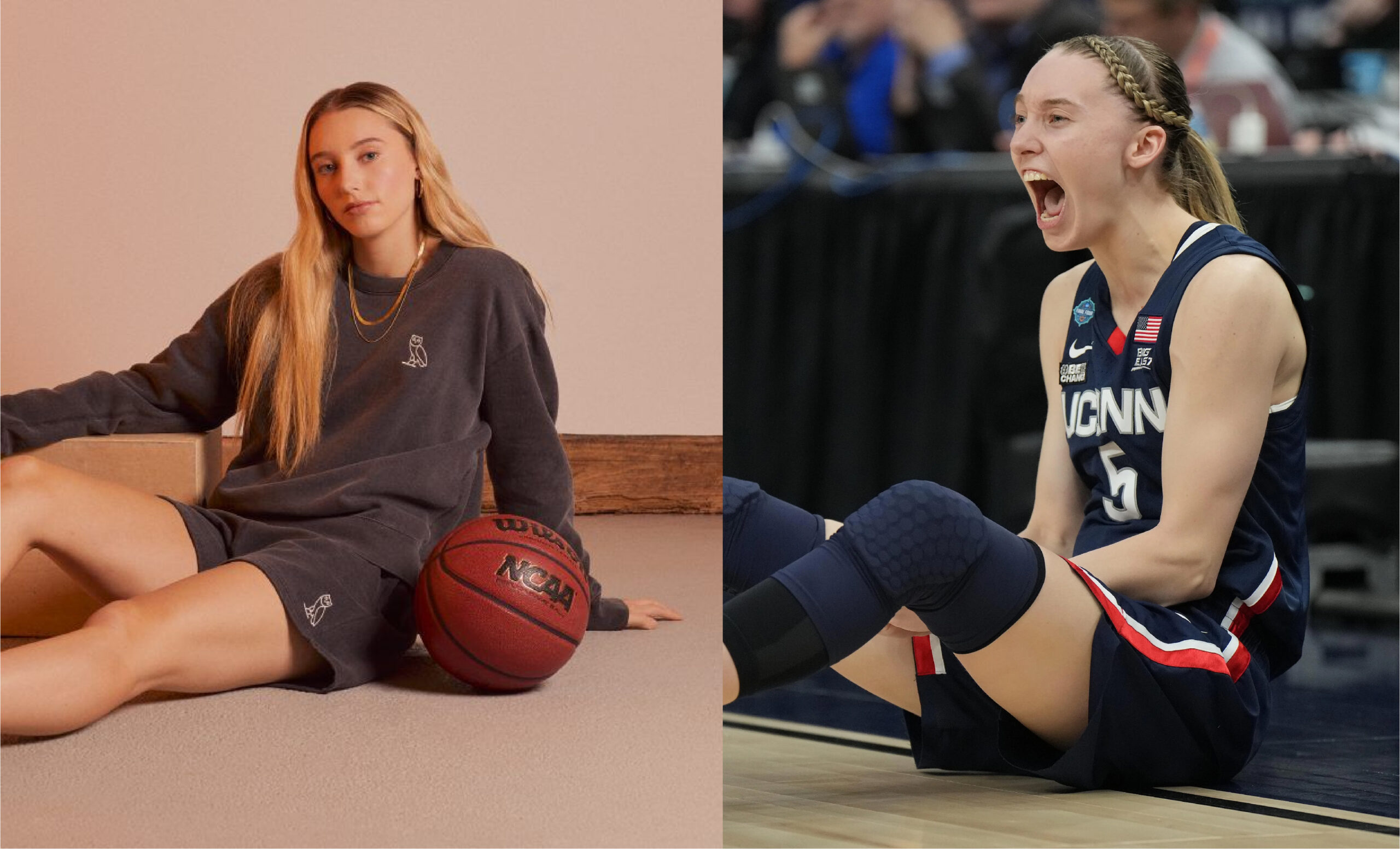Angel Reese, a standout in women’s college basketball, has captivated fans and analysts alike with her remarkable skills, leadership, and competitive spirit. As a key player for the LSU Tigers, Reese’s on-court presence is nothing short of transformative. However, like many athletes, she is not immune to the physical toll that high-level basketball can take on the body. The phrase “Angel Reese injury” has circulated among fans and sports commentators, sparking concerns about her health and what it means for her career and her team.
| Category | Details |
|---|---|
| Full Name | Angel C. Reese |
| Date of Birth | May 6, 2002 |
| Place of Birth | Randallstown, Maryland, USA |
| Nationality | American |
| Height | 6 ft 3 in (1.91 m) |
| Weight | 165 lbs (75 kg) |
| Position | Forward |
| High School | St. Frances Academy, Baltimore, Maryland |
| College | Louisiana State University (LSU) |
| Previous College | University of Maryland (2020–2022) |
| Team | LSU Tigers Women’s Basketball Team |
| Jersey Number | #10 |
| Notable Awards | NCAA Tournament Most Outstanding Player (2023) |
| Career Highlights | 2023 NCAA Champion, Multiple All-American Honors |
| Injury History | Jones Fracture (Right Foot) – December 2020 |
| Family | Son of Angel Reese Sr. and Mom Angelita Crawford |
| Social Media | Instagram: @angelreese10; Twitter: @Reese10Angel |
Who is Angel Reese?
Angel Reese is a powerhouse in the world of women’s college basketball. Standing at 6 feet 3 inches tall, she plays forward for the Louisiana State University (LSU) Tigers. Before transferring to LSU, Reese played two seasons at the University of Maryland, where she made a name for herself as one of the most talented players in the NCAA.
Reese’s journey to basketball stardom began in high school, where she was ranked as the No. 2 overall recruit in the 2020 class by ESPN. Known for her incredible rebounding skills, athleticism, and tenacity on defense, Reese quickly became a force to be reckoned with in the NCAA. In the 2022-2023 season with LSU, she led the Tigers to the NCAA Championship and was named the Most Outstanding Player of the tournament. Her accolades include multiple All-American honors, and she’s often compared to some of the best players in women’s basketball history.
Despite her undeniable success, like many elite athletes, Reese has faced her share of physical challenges, raising concerns about how injuries might impact her career trajectory.
Angel Reese Injury: The Backstory
Though the specifics of “Angel Reese injury” might refer to various bumps and bruises she has sustained over her career, her most significant injury came during her time at the University of Maryland. In December 2020, during her freshman year, Reese suffered a Jones fracture in her right foot, an injury that sidelined her for a large portion of the season.
A Jones fracture is a break between the base and middle part of the fifth metatarsal in the foot. This type of injury is common among athletes, particularly those in sports that require constant running, jumping, and sudden directional changes—activities that are typical in basketball. Jones fractures are notorious for their slow recovery process and often require surgery to properly heal, which was the case for Reese.
The injury came at a pivotal moment for Reese, who had already shown incredible promise early in her freshman season. Prior to the injury, she was averaging 13.3 points and 7.0 rebounds per game, demonstrating why she was one of the most highly-touted recruits of her class. The injury cut short what could have been an even more impressive debut season, leaving her to focus on recovery and rehabilitation.
The Recovery Process: Angel Reese’s Road to Return
After her injury in December 2020, Reese underwent surgery to repair the Jones fracture. For many athletes, returning from this type of injury requires patience, determination, and a rigorous rehabilitation program.
The typical recovery time for a Jones fracture can range from 6 to 12 weeks, but complications or setbacks can extend that timeline. After surgery, athletes usually need to spend several weeks in a cast or walking boot to keep weight off the injured foot. This is followed by physical therapy to rebuild strength, mobility, and balance, focusing on gradually reintroducing weight-bearing activities.
For Reese, the mental aspect of recovery was just as challenging as the physical. The pressure to return to peak form can weigh heavily on athletes, especially those who are used to performing at an elite level. However, Reese approached her recovery with the same intensity she brings to the court. By the time she returned in the 2021-2022 season, she was not only back to her former self but arguably better, showing improved strength and maturity in her game.
Impact of Injuries on College Athletes
Injuries are an inevitable part of sports, but they can have significant consequences for college athletes like Angel Reese. For players aiming for a professional career, an injury can derail their progress, affect their draft prospects, and even jeopardize future earnings. In the case of Reese, her injury occurred early enough in her career that she was able to fully recover and continue to develop as a player. However, this is not always the case for athletes dealing with chronic or recurring injuries.
For college athletes, the support system provided by their schools is crucial during the recovery process. Athletic trainers, medical staff, and coaches play a vital role in ensuring that players receive proper treatment and are not rushed back to the court before they are ready. LSU’s athletic department has a strong reputation for supporting its athletes, which likely contributed to Reese’s successful return to the game.
Injuries like the one Reese experienced also underscore the importance of having a long-term perspective on athletic careers. While the immediate goal is often to get back on the court as soon as possible, rushing recovery can lead to further injury or long-term damage. For athletes like Reese, who have aspirations of playing in the WNBA and beyond, ensuring a full recovery is essential for maintaining longevity in the sport.
Angel Reese’s Resilience and Return to Dominance
After recovering from her foot injury, Angel Reese returned to the court stronger than ever. Her transfer to LSU in 2022 marked the beginning of a new chapter in her career, and she wasted no time in proving that she was still one of the most dominant players in women’s college basketball.
In the 2022-2023 season, Reese averaged a double-double, with over 23 points and 15 rebounds per game, leading the Tigers to their first NCAA women’s basketball national championship. Her ability to dominate the boards, score in the paint, and defend against top-tier competition made her one of the most versatile players in the game. Despite the setbacks early in her career, Reese’s resilience and dedication to her craft allowed her to elevate her performance to new heights.
Her injury experience has likely contributed to her mental toughness on the court, as she knows what it takes to overcome adversity. This mental strength, combined with her physical skills, has made her a leader for LSU and a player to watch as she continues her collegiate career and prepares for the possibility of entering the WNBA draft.
Injury Prevention and Management Moving Forward
As Angel Reese continues to dominate in college basketball, injury prevention will be a key factor in her long-term success. Basketball is a high-impact sport that puts tremendous strain on the body, particularly the lower extremities. Athletes like Reese must prioritize injury management to ensure they can continue to perform at their best.
Some strategies that elite athletes like Reese may use to prevent future injuries include:
- Strength and Conditioning Programs: Tailored training programs help athletes build muscle strength, improve flexibility, and enhance overall endurance. Strengthening the muscles around the ankles, knees, and hips can help reduce the risk of foot and leg injuries.
- Proper Rest and Recovery: Ensuring adequate rest between games and training sessions allows the body to recover and reduces the likelihood of overuse injuries. For college athletes juggling academics and sports, maintaining a balance between work and recovery is essential.
- Regular Medical Check-ups: Staying in close contact with team doctors and athletic trainers helps athletes monitor any potential issues before they become serious. Routine medical evaluations can catch early signs of injury and allow for preventive measures to be taken.
- Rehabilitation and Physical Therapy: Even after recovering from an injury, continuing rehabilitation exercises helps maintain strength and prevent re-injury. Athletes like Reese who have previously sustained serious injuries need to continue working on the areas that were affected.
Conclusion: Angel Reese’s Future and the Role of Injuries in Her Career
The phrase “Angel Reese injury” serves as a reminder that even the most talented athletes are not immune to the physical challenges of sports. Reese’s journey, from her injury in 2020 to her triumphant return to the court with LSU, is a testament to her resilience, work ethic, and determination.
While injuries can disrupt careers, how athletes respond to these challenges often defines their legacy. In Reese’s case, her ability to come back stronger after her injury only adds to her impressive resume as one of the top players in college basketball.
Read more: Did Lovely Peaches Die? The Truth Behind the Rumors and Her Controversial Online Presence




